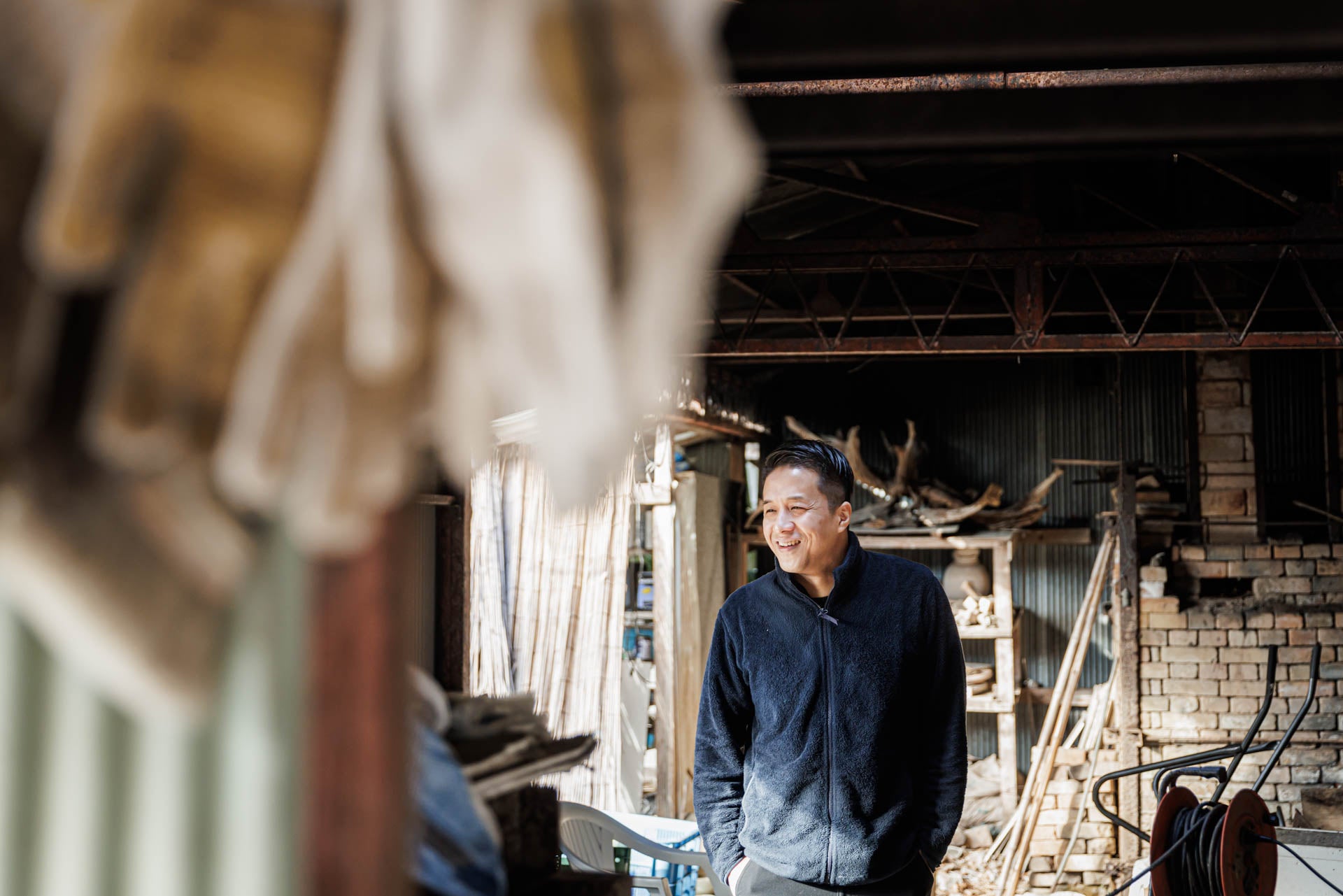
Onozawa Koichi

Artist Onozawa Koichi pursues beauty of form <br data-mce-fragment="1">Onozawa was always surrounded by ceramic works, as his father collected pottery by contemporary artists. After experiencing pottery-making as a student, he began to think about becoming a ceramic artist.
"Ever since I was little, I loved working with clay and drawing, and in the back of my mind, I knew I wanted to become a potter. Whenever I met artists at exhibitions, I would talk to them about their works. Gradually, it began to feel like research and study, and little by little, I began to listen to what it would be like if I were an artist. I thought that if I was going to work, I should try my best at something I love, so after graduating from university, I entered the Tajimi City Ceramic Design Institute. It's like a ceramics school, but not only did I learn the basics of technique and knowledge, I also became more conscious of my role as an artist through the classes and my seniors. I was also able to experience firsthand the history of Mino ware, such as Shino and Oribe, which I loved."

Pottery town "Mashiko Town, Tochigi Prefecture"
Koichi Onozawa has his studio in Mashiko Town.
Mashiko Town, located on the border between Tochigi and Ibaraki Prefectures, is famous as the birthplace of "Mashiko ware," but its roots lie in Kasama City, Ibaraki Prefecture. The history of Mashiko ware began when Otsuka Keizaburo, who trained at "Kuno Kiln," the founder of Kasama ware, moved to Mashiko Town and built a kiln. Until the Meiji period, it was highly valued as a daily item, but demand decreased as the times prospered.
In the Taisho era, Shoji Hamada, a potter of the folk craft movement, produced unique works in Mashiko. Muneyoshi Yanagi and others promoted these works as folk crafts, and Mashiko ware once again attracted attention.
It is still known as a town of pottery, with approximately 250 kilns and pottery retailers, and the Mashiko Pottery Fair held in 2023 attracted a total of 360,000 visitors.

The Mythical Technique of Ceramic Lacquerware <br data-mce-fragment="1">The defining feature of Onozawa's works is the mythical technique called "ceramic lacquerware."
Nowadays, when we say "lacquerware," it generally refers to carved wooden bowls and other items that have been coated with lacquer. This is called "wood-based" lacquerware, and the lacquer enhances its functionality, such as water resistance and durability, as well as its decorativeness.
On the other hand, modern pottery uses glazes. Glazes are applied to bisque fired pottery and then fired at high temperatures to turn it into a glassy texture. However, although it was not common, lacquer has been used on pottery since the ancient Jomon period. By firing the clay and applying lacquer, water was prevented from penetrating and a glossy finish was achieved. This technique is called "pottery-based lacquerware." It is a mythical technique that disappeared with the development of firing technology, but it was an attractive technique to Onozawa, who originally preferred ambiguous expressions different from glazes in his powder-fired and fired works. His encounter with lacquer led him to explore the possibilities of expression using pottery-based lacquerware.

From Artist
In my work, I want to capture the charm of old, weathered pottery, so I layer clay on it many times and let it age as if time is passing. However, if I simply process something old out of admiration, it becomes an imitation. I coat it with lacquer or tin to capture my actions and give it a new look. You could say that this texture is born from the conflicting feelings of respect for time-honored works and not wanting to deceive with fakes. There are ancient tableware that is naturally distorted and those that are intentionally distorted, and I am attracted to both. Generally, if a symmetrical piece of tableware is slightly distorted, it is considered a failure, but I pursue the movement of the shape that occurs due to distortion. If the distortion is further tilted, it becomes even more interesting. I'm sure it's the same with humans (laughs).





